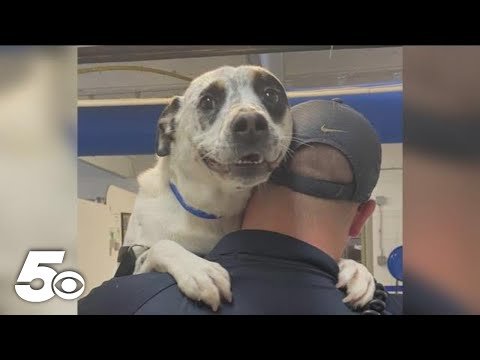Have you ever wondered why your furry friend seems to sleep so much, or why they’re suddenly active in the middle of the night?
Understanding your dog’s sleep patterns can provide valuable insights into their health, behavior, and overall well-being.
Let’s dive into the fascinating world of canine slumber and explore what’s normal, what’s not, and how you can ensure your pet gets the best rest possible.
The Basics of Canine Sleep
Dogs, like humans, need sleep to recharge their bodies and minds.
However, their sleep patterns differ significantly from ours.
On average, adult dogs sleep between 12 to 14 hours per day, while puppies and senior dogs may sleep even more.
Unlike humans, dogs are polyphasic sleepers, meaning they sleep in multiple shorter periods throughout the day and night.
Want to keep up to date with new animal stories?
Sleep Cycles in Dogs
Dogs experience two main types of sleep: slow-wave sleep (SWS) and rapid eye movement (REM) sleep.
During SWS, your dog’s breathing slows, blood pressure drops, and heart rate decreases.
REM sleep is when dogs dream, and you might notice twitching paws or quiet barks.
Interestingly, larger dogs tend to have longer sleep cycles and spend more time in REM sleep compared to smaller breeds.
Factors Affecting Dog Sleep Patterns
Several factors can influence how much and when your dog sleeps.
Age plays a significant role, with puppies and older dogs requiring more sleep than adult dogs.
The dog’s breed can also affect sleep patterns, with working breeds often being more active and alert.
Diet, exercise levels, and overall health can impact sleep quality and duration.
Environmental factors like noise, temperature, and lighting can also influence your dog’s sleep habits.
Signs of Healthy Sleep in Dogs
A dog with healthy sleep patterns will wake up easily and be alert.
They should have consistent sleep-wake cycles, even if they include multiple naps throughout the day.
During sleep, your dog should appear relaxed, with occasional twitching or quiet vocalizations during REM sleep.
After waking, your dog should be energetic and ready for activity.

Common Sleep Issues in Dogs
Just like humans, dogs can experience sleep disorders.
Insomnia in dogs can be caused by pain, anxiety, or medical conditions.
Sleep apnea, more common in brachycephalic breeds, can disrupt sleep and cause snoring.
Narcolepsy, though rare, can cause sudden sleep attacks in dogs.
If you notice persistent changes in your dog’s sleep patterns, consult your veterinarian.
Creating an Ideal Sleep Environment
Providing a comfortable sleeping area is crucial for your dog’s rest.
Choose a quiet location away from household traffic for your dog’s bed.
Ensure the sleeping area is at a comfortable temperature, neither too hot nor too cold.
A soft, supportive bed that’s appropriate for your dog’s size can greatly improve sleep quality.
Consider using blackout curtains or a crate cover to create a dark sleeping environment.
The Impact of Exercise on Sleep
Regular exercise is essential for promoting healthy sleep in dogs.
Aim for at least 30 minutes to an hour of physical activity daily, depending on your dog’s age and breed.
Mental stimulation through training or puzzle toys can also help tire out your dog.
However, avoid intense exercise right before bedtime, as it may make it harder for your dog to settle down.
Diet and Sleep
What your dog eats can affect their sleep quality.
Avoid feeding large meals close to bedtime, as digestion can disrupt sleep.
Ensure your dog has access to fresh water throughout the day, but consider limiting water intake right before bed to prevent midnight bathroom breaks.
Some dogs may be sensitive to certain ingredients, so monitor how different foods affect your dog’s sleep patterns.
Establishing a Bedtime Routine
Dogs thrive on routine, and a consistent bedtime ritual can signal that it’s time to wind down.
Try to maintain a regular schedule for feeding, walks, and bedtime.
Incorporate calming activities like gentle play or grooming into your evening routine.
Gradually decrease activity and dim lights as bedtime approaches to help your dog relax.

When to Seek Veterinary Help
While some variation in sleep patterns is normal, significant changes could indicate a problem.
If your dog suddenly sleeps much more or less than usual, it’s worth investigating.
Excessive daytime sleepiness, difficulty waking, or signs of discomfort during sleep are red flags.
Changes in sleep patterns accompanied by other symptoms like loss of appetite or behavioral changes warrant a veterinary check-up.
Conclusion: Sweet Dreams for Your Furry Friend
Understanding your dog’s sleep patterns is key to ensuring their health and happiness.
By recognizing what’s normal for your pet and creating an environment conducive to restful sleep, you can help your dog get the quality rest they need.
Remember, every dog is unique, and what works for one may not work for another.
Pay attention to your furry friend’s individual needs and don’t hesitate to consult with your vet if you have concerns.
With the right knowledge and care, you can help your canine companion enjoy sweet dreams and wake up ready for joyful days by your side.
Share this guide with fellow dog lovers to help spread awareness about the importance of healthy sleep for our furry friends!
Sweet dreams to all the dozing dogs out there!
SHARE now with your friends!


